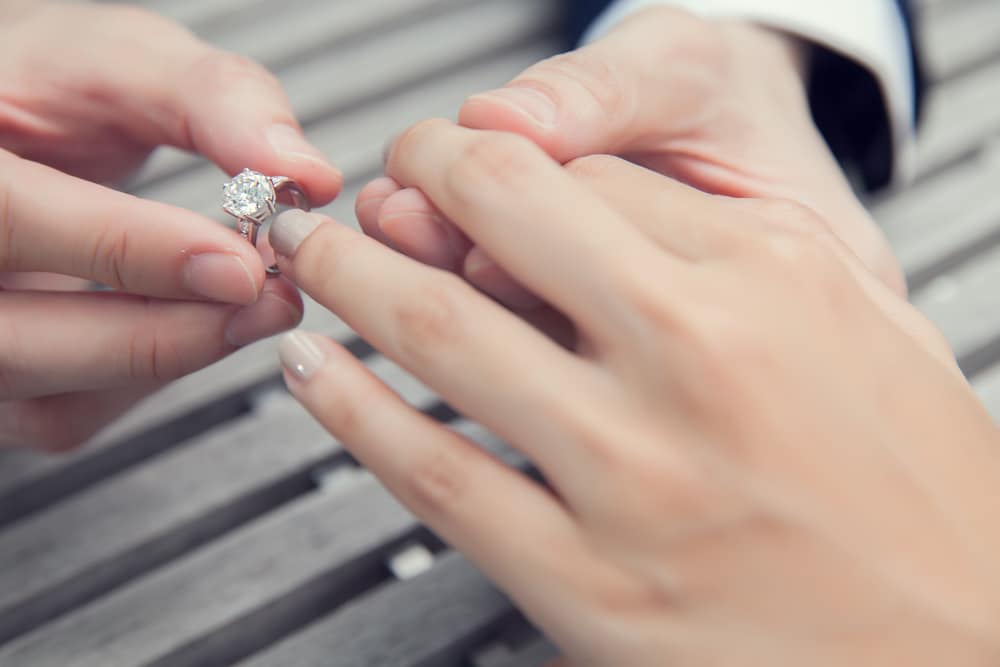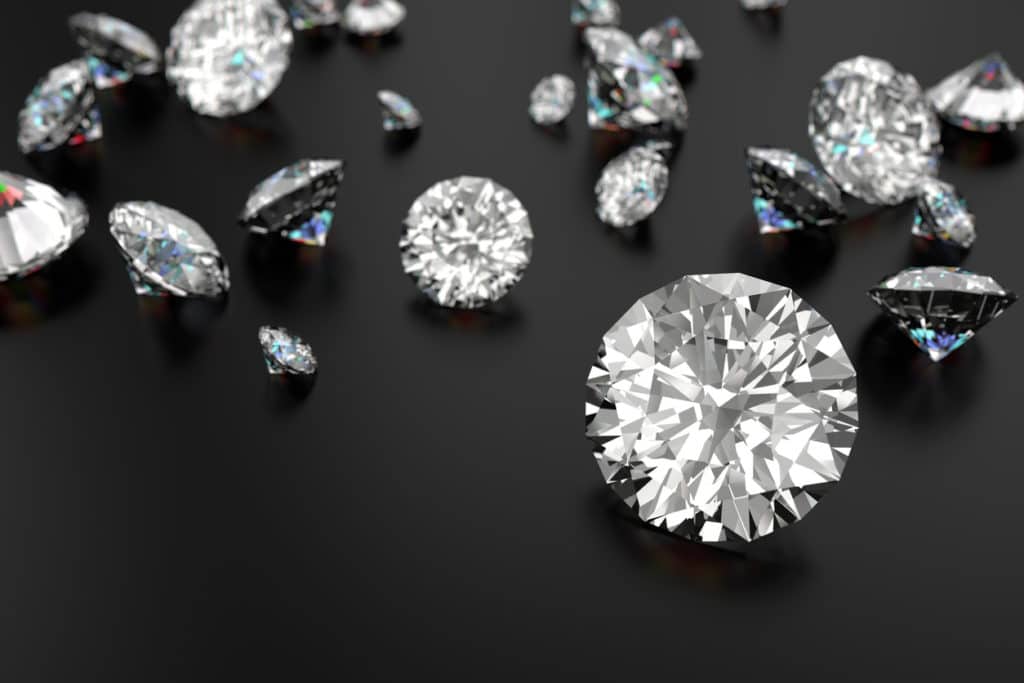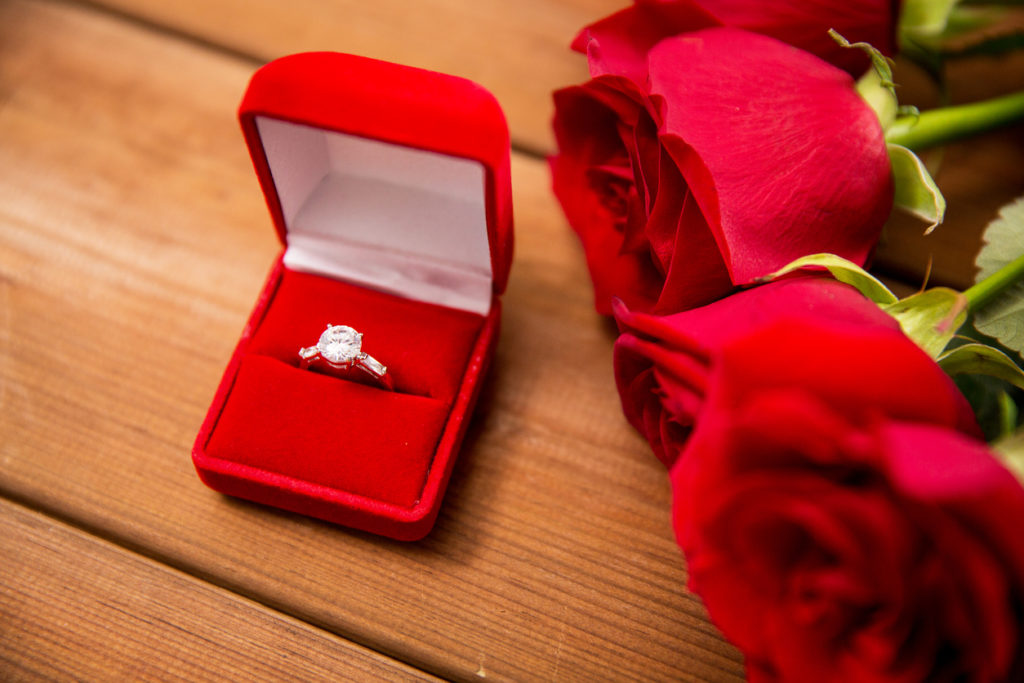Uncategorized
Why Diamonds are the Highlight of Engagement Rings
A man presents his prospective bride with an engagement ring upon acceptance of his marriage proposal. Anthropologists believe this tradition originated from a Roman custom in which wives wore rings attached to small keys, indicating their husbands’ ownership.
In 1477, Archduke Maximillian of Austria commissioned the very first diamond engagement ring on record for his betrothed, Mary of Burgundy. This sparked a trend for diamond rings among European aristocracy and nobility.
The sentimental Victorians popularized ornate engagement ring designs that mixed diamonds with other gemstones, precious metals, and enamels. Often these rings were crafted in the shapes of flowers and were dubbed “posey rings.” Diamond rings crafted during the Edwardian era continued the tradition of pairing diamonds with other jewels, commonly mounted in filigree settings.
The opening of the DeBeers mines in Africa made diamonds more accessible. In the 1930s, when demand for diamond rings declined in the U.S. during hard economic times, the De Beers Company began an aggressive marketing campaign using photographs of glamorous movie stars swathed in diamonds. Within three years, the sales of diamonds had increased by 50 percent.
In 1947, De Beers launched its now classic slogan, “A Diamond is Forever.” This campaign spurred even more sales. The implied durability of a diamond conveyed the meaning in the American psyche that marriage is forever. A diamond’s purity and sparkle have now become symbols of the depth of a man’s commitment to the woman he loves in practically all corners of the world.
Diamonds still signify the celebration of a union and cherished memory, though more cuts make more styles an easy option for diamond lovers.
The History of Popular Cuts
Over the years, the most popular cut for diamond engagement rings has always been the round brilliant, consisting of 58 facets that divide the stone into a top and bottom half. Runners up include the princess cut, the emerald cut, and the oval cut, with the cushion cut quickly gaining popularity as a recent trend.
Uncategorized
Diamonds Make the World a Better Place
By – Jean-Marc Lieberherr
Valentine’s Day is the ideal opportunity for all of us in the trade to remind ourselves and consumers why diamonds are the ultimate symbol of authentic love and commitment. Because they are billion-year-old miracles of nature, diamonds have the magic to communicate sincerity and depth of emotion in a way that words often cannot. This power cannot be replicated, or simulated. It finds its source hundreds of miles underneath the Earth’s mantle, and it is as old as time itself.
Today, diamonds are a life-affirming force that must be celebrated with consumers. When I joined the diamond sector in 2005, with no mining experience whatsoever, little did I know that I would become part of an incredibly diverse and committed community involving millions of people the world over. I discovered the significant contribution diamond mining makes to entire regions and communities, through local employment and investments, construction of infrastructure, and development of health and education programs. I would assume that—like me 10 years ago—most consumers today are not aware of the contribution diamonds make to the world. Valentine’s Day is an opportunity for us all to share our pride in being part of this industry.
Recently, I attended a preview of A United Kingdom, a moving true love story depicting how Prince Seretse Khama of Botswana defied racial prejudices to marry a white English woman and become the first president of the Republic of Botswana. The film ends when the young Seretse discovers that diamonds have been found in Botswana, potentially changing the destiny of his country. Botswana is now the second largest diamond producer in the world, and in the 50 years since their discovery, diamonds have transformed it. From six miles of paved roads, Botswana now counts 7,000. Every child in Botswana receives free education until the age of 13, and the country now has 300 secondary schools compared with just three back in 1966.
There are many such examples of how diamonds have transformed mining regions and communities. In my 10 years in diamond mining, I have seen how mines have developed and supported entire communities, providing skills and employment to men and women of talent who would otherwise never have fulfilled their potential, helping communities maintain and promote their traditional way of life while bettering their future, giving children opportunities to learn and dream of better lives. Beyond mining, diamonds provide livelihood, health, and education to close to a million people in India. Many successful Indian diamantaires are responsible for some of the most remarkable and innovative social programs I have seen, without seeking any credit or recognition for creating them.
Is that to say that all is perfect in the world of diamonds? Like any industry, the diamond sector has challenges, but few industries face the same level of scrutiny, and have done as much to transform themselves, as ours has during the past 15 years. Beyond the Kimberley Process, the industry has developed voluntary standards, such as the Responsible Jewellery Council Code of Practices, that apply from diamond mining to diamond retailing. Many companies have gone over and beyond these standards and developed their own strict protocols, principles, and confidence programs. The industry has engaged with nongovernmental organizations (NGOs) to help raise mining standards and working conditions in the artisanal sector. The list is long of what the diamond sector has done, and will continue to do, to offer consumers a product they can be proud of, a unique symbol of love and sincerity, a true miracle of nature.
Diamonds matter to the livelihood of millions, and they matter to all of us who want to express to our loved ones the sincerity of our commitment. Not all is perfect, but it is good today, and it will be better tomorrow. I take pride in the fact that diamonds make the world a better place.
Uncategorized
Tips on Buying Valentine’s Day Jewelry
Jewelry makes for a popular Valentine’s Day gift but purchasing it can be tricky.
“The right gift of jewelry is not just for that moment, that one singular day,” said Bill Scielso, owner of Bilori Jewelers in Denville. “No, no. Every time someone puts that piece on, whether a ring or a watch, earrings or a bracelet or a pin, they think of the moment that it was given to them. Jewelry has significance, meaning to it.”
Scielso said the average national purchase on Valentine’s Day is $350 and for that type of investment, it has to be a thoughtful gift that will stand the test of time.
“A nice, quality piece needn’t run in the thousands of dollars. Your local town jeweler is someone who you can build a relationship with, knows you when you walk in and has an understanding of not just your budget but also your significant other,” Scielso said.
Here are Scielso’s tips on buying jewelry for Valentine’s Day.
Do some spy work: An affair of the heart needs a little reconnaissance and that means you might need to do some digging to make a smart purchase.
“This week, look into her jewelry collection if you can, see what she likes. Make a note of her favorite pieces or the ones she wears the most. If you can, take a couple photos on your smartphone,” Scielso said. “Check out her Facebook photos and see what she likes to wear to wear, say to that wedding last year or the last formal you went to – these are the pieces she loves and cherishes. See what she is wearing. Small earrings, large earrings, ring or bracelets? It gives you a start.”
Be creative in your approach: Don’t go for the newest or biggest thing in your price range. Not everyone loves flash or over the top or simply feels comfortable wearing something extravagant.
“Think outside the box about what you want to put inside your box. Estate jewelry is really interesting and often overlooked because chain jewelry stores advertise fads as ‘must gets.’ But an estate piece can be timeless and classic,” Scielso said.
Know your budget and stick to it: It is easy to get caught up in emotion, after all Valentine’s Day is an emotional day. Know your price point and be comfortable with it. Take some time to research online in order to help set a budget that is comfortable for the day but also provides an item that shows love and thought.
“All types of people walk through our doors in the days leading up to Valentine’s Day. With them come all sorts of budgets. My job is to provide the right fit at the right price so you can walk out the door and have enough to get a drink at Smart World Coffee across the street.”
Don’t delay: Waiting until the day before or the dreaded day of Valentine’s Day is a horrible idea. Horrible. Stores can sometimes get busy and the piece you might want to purchase based off your browsing on the Internet might not be there. Desperation makes for a lousy Valentine’s Day gift.
“The job of your local town jeweler isn’t to make a decision for you, it is to guide you to the right decision for the one you love. If you come in at the last minute, you might be frustrated and end up heading to the drug store for some stale, generic candy and a wilting flower. There’s nothing wrong with that, unless you want to look like you don’t care.”
What’s hot in 2017
Bar necklaces in gold, silver and rose gold as well as diamonds. Colored gem stones and morganite in pink gold are also trending.







































